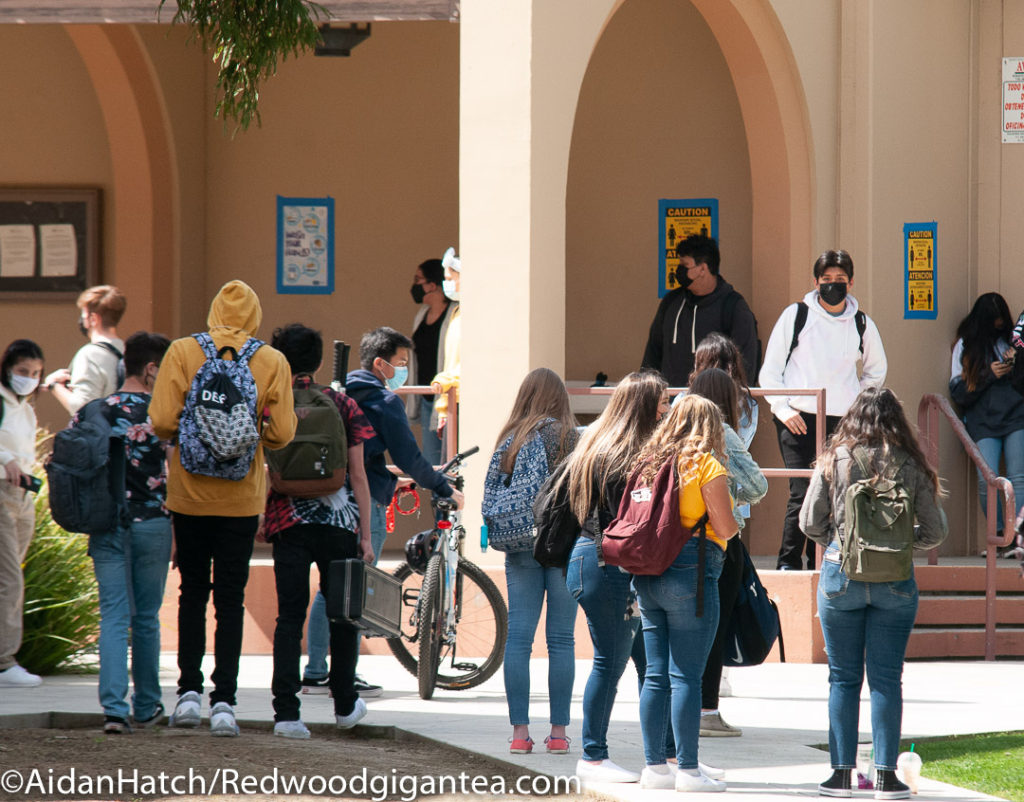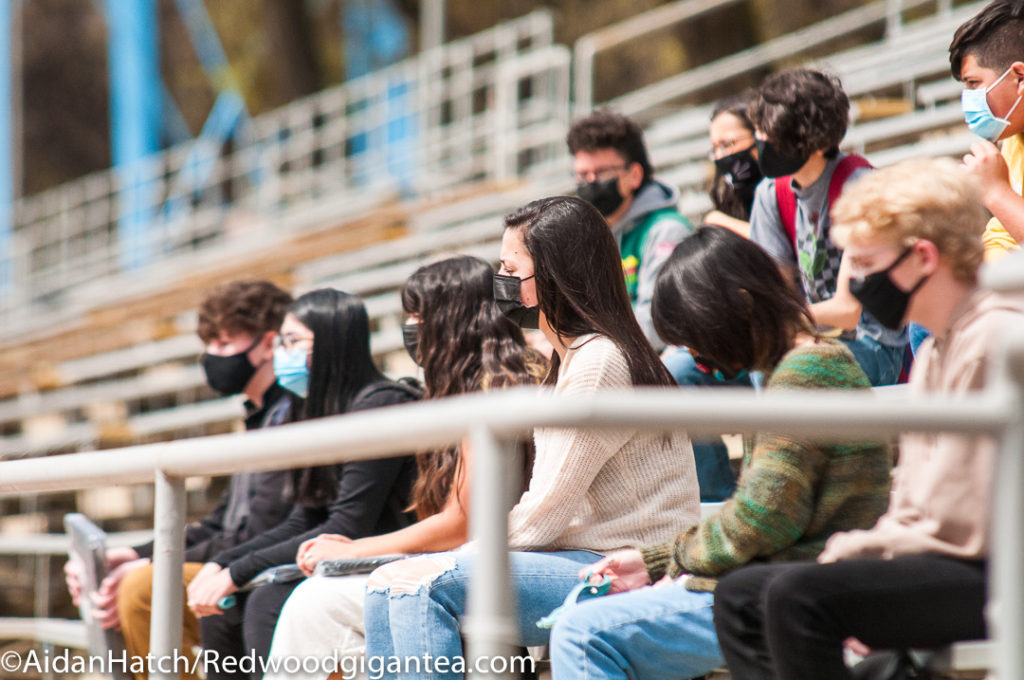By: Megan Yang
Redwood High school students returned to in person learning on March 26, 2021, while some decided to stay distance learners. See how in person learning has affected students grades and teachers.
Melissa Adalian, Freshman teacher for English 1 and English 1 Honors, says, “Students do seem more motivated now that we are on campus.” Many students have confided in Adalian that they were “struggling with depression” due to Covid-19 and being isolated at home. Now that the students have returned to in person learning, “they are feeling more positive about life.”

The latest statistics Adalian has heard is, “the students who failed one or more classes jumped from around 10% to around 22% this school year over the last.” Many students “struggled with technology” during the first semester.
Adalian says her “biggest struggle currently is with simulcasting.” Having to divide her attention between the students online and in person has been “a real challenge.” Adalian “knows grades are important,” but she has more concern that less time in class will “cause loss in learning.” With the upcoming school year, “We will have to work even harder… to help students fill in gaps in their learning,” she says.
Calvin Feehan, Spanish 2 teacher, says there has been some significant changes with grades, “but not as much as [he] had hoped.” The students whose grades are suffering, “I think… [are] not motivated to bring up their grades,” he says. Most of the teachers have been “extending grace all year” and some of them “scrapped old policies of late penalties… and have tons of office hours opportunities, but… students don’t take advantage of [them].”

A lot of high school students aren’t “great about doing homework.” This year asynchronous assignments have been assigned to students to do outside of class due to the hybrid schedule cutting time. The students see this as homework “and they don’t do them.” This affects their grades and “affects the scope of what we’re able to get through.”
A positive thing about returning to in person is “the change in interaction between teachers and students,” he says. Feehan is now able to walk around the classroom, see what students are working on, and give immediate input on their work. This wasn’t “the same in the all-digital world.”
For in person, “many of the [students] are the same,” as the distance learners. “It seems like people forgot how to talk to each other,” he says. Not many students say anything in class and “it is a lot of work” trying to get them to talk. Managing both in person and virtual learners is “exhausting” trying to split the attention between the two groups.
Feehan hopes “[he is] not coming across as too negative.” “Here’s to a better future!,” he says.

